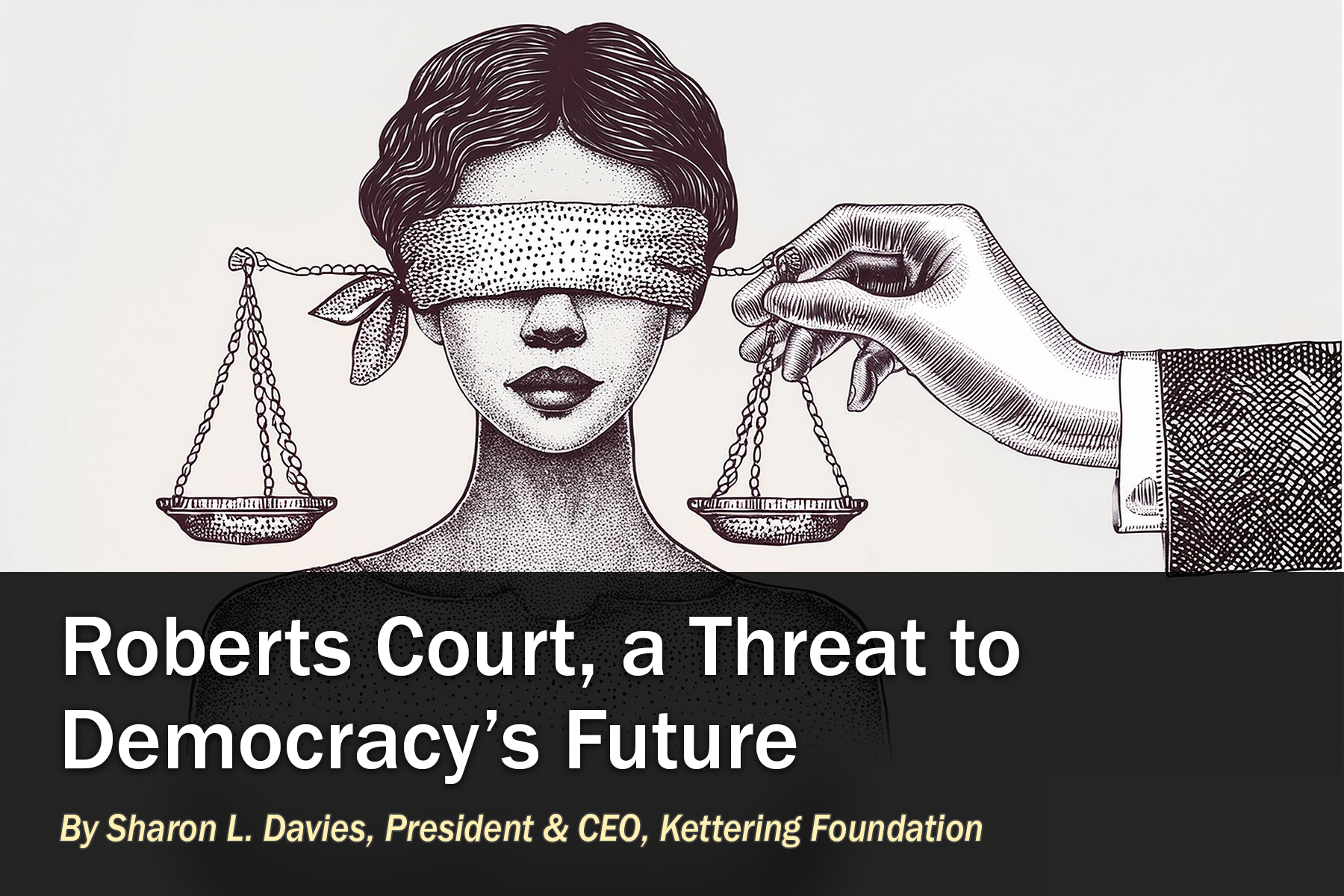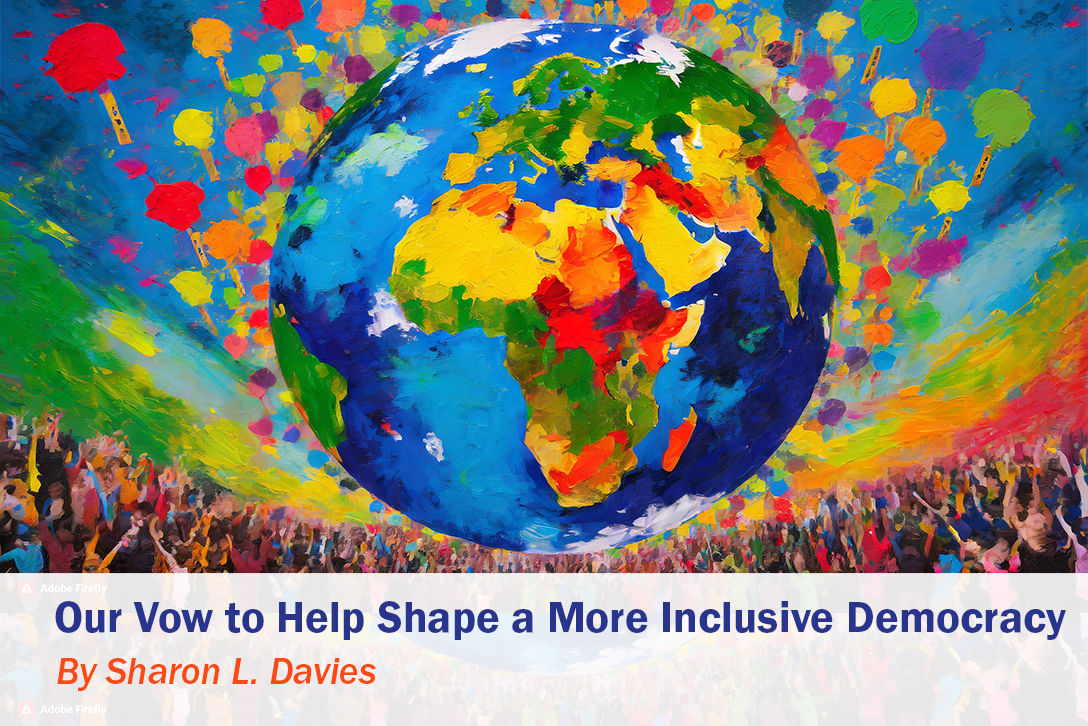Lessons for Journalists from Amanda Ripley’s Book, High Conflict: Part I

Earlier this year, journalist Amanda Ripley spoke to Kettering Foundation staff about her book High Conflict: Why We Get Trapped and How We Get Out. In this first in a series of two blog posts, Jennifer Brandel, who has collaborated with Kettering on journalism experiments in strengthening democracy, writes about the implications of the book’s insights for the media.
Conflict is part of democracy. But there’s a stark difference between the characteristics of healthy conflict and what’s called high conflict. High conflict is when a conflict becomes self-perpetuating and all-consuming. Often it devolves into an “us vs. them” situation: Democrats vs. Republicans, White vs. Black, urban vs. rural, etc. Many people in the American public are currently embroiled in high conflict.
Journalist and author Amanda Ripley wrote a practical and tactical book called High Conflict that explains why we get into it and how we can get out. While her writing is not directed exclusively at the media, some lessons can help shift the practice of journalism to support a healthier democracy. This two-part article will explore how Ripley’s ideas offer ways in which journalists can shift their traditional processes to reduce high conflict while supporting the kind of healthy conflict that can lead to community empowerment.
Media as a conflict entrepreneur
One concept Ripley talks about is that of a “conflict entrepreneur,” a person who exploits high conflict. Yet the media itself can act as a conflict entrepreneur. The business models of many commercial newsrooms and the attention economy depend on sharing information that puts people into highly charged emotional states: anger, shock, disgust, fear, righteousness, or contempt. In addition, the expansion of news from in-house platforms (e.g., their own websites, broadcast signals, printed materials) to proprietary social media platforms like Meta (Facebook), Twitter, Instagram, Snap, TikTok, etc., further encourages the production and sharing of content that drives emotion—and often division.
The attention economy has also shrunk many consumers’ attention spans for longer, more complex, and nuanced information. This encourages the production of more “bite-sized” journalism that’s often oversimplified at the expense of the reality of any given story of people, institutions, or forces that are in tension or conflict. Simplicity, Ripley found, is related to people becoming more certain in their beliefs, more intractable. Those emotional states become fuel for black and white thinking, dehumanization, and potential violence.
Many for-profit and nonprofit newsrooms exploit conflict for generating dramatic stories, attracting public attention and generating money (whether through advertising dollars, subscriptions, or memberships), which in turn helps the newsroom stay in business.
One way for media outlets to dilute the kind of journalism that exacerbates conflict is to practice more public-powered journalism, solutions journalism, and ensure a well-rounded information diet that includes coverage of what brings people together: arts, culture, and opportunities for civic engagement.
Binaries and standard mythology
The two-sided or “bothsidesism” framing to so many news stories creates binaries. Rarely are there two clear-cut sides in any relationship, and this approach reinforces overly simplistic and inaccurate depictions of reality. In the so-called interest of fairness, the “both sides” approach winds up creating false equivalence, providing two positions as though they have equal merit when they do not (e.g., climate change deniers and science). This leaves open exploitation opportunities for bad actors who seek to discredit accepted doctrine or to bring disinformation further into the public sphere. In turn, this reinforces a “good vs. evil” framing that runs deep in the human psyche and is the foundation of many fairy tales, stories, and mainstream entertainment media in Western culture.
Another way that journalists flatten people or issues into stereotypes is the technique of “telling:” using certain shorthand language for a person or group (e.g., “at-risk youth,” “underserved community”). These quick descriptions are useful in that they’re concise, but ultimately using them is at the expense of painting a fuller and more accurate picture.
Humiliation
Journalists are taught to hold people, particularly the powerful, to account. Yet “accountability reporting” is based on the following theory of change: exposing and humiliating a person, institution, organization, or business for wrongdoing will lead to public outrage, along with shame felt by the subject in question, which in turn will spur humiliated parties to take action and change. The hope is the ensuing change will create accountability and contribute toward some arc of justice.
While this sequence can and does play out as described above, Ripley explains in her book that humiliation is the nuclear bomb of high conflict. It should be the last resort to solving for any given tension. But for many newsrooms, their only real instrument in accountability reporting is humiliation.
Humiliation is a limited tool for accountability. People rarely react rationally or forthrightly when being humiliated. Targeting any single person, business, organization with accountability through humiliation addresses symptoms rather than the disease. The biggest issues that communities face are multifaceted, complex, and systemic, and most news outlets and journalists aren’t set up to think and report on a system level. This singling-out approach encourages the belief in bad apples (again reinforcing the “good vs. evil” frame), rather than examining the history, system design, and incentive structures that produce bad outcomes.
Paths toward “good conflict” in journalism practices and products
Speaking of systems and incentive structures, I don’t imagine that newsrooms will be able to shift toward good conflict practices without targeted, long-term interventions.
Auditing stories
Perhaps the simplest way for newsrooms to start to understand where and to what degree high conflict practices are showing up in their reporting is to do an audit. I could imagine a checklist for each story that asks the following questions:
- Are only two sides presented in this story?
- Are we using humiliation to attempt to right a wrong?
- Are we using shorthand descriptions of people that encourage stereotypes (“telling”)?
- Are we oversimplifying a complex issue and repeating a predictable narrative?
- What contribution is this story adding to public understanding of the topic?
Shamil Idress runs Search for Common Ground, an NGO that works in over 30 conflict zones worldwide. Wherever he goes, he says, people want the same three things: security, dignity, and hope. What if journalists asked themselves how each story contributes to those three universal needs?
How reporters listen
Most reporters listen to collect information, not to necessarily understand the motivations of their sources. Digging deeper to get at what Ripley calls “the understory” and what motivates people to make decisions is a huge, missed opportunity.
Reporters would do well to deploy a listening method Ripley describes in her book as “looping” or “tactical listening.”
Tactical listening is a listening style where journalists solely focus on their sources’ response to a question to understand what’s most important to them.
There are four steps of tactical listening:
1. Listen: Listen to the other person to hear what’s most important to them
2. Paraphrase: Articulate the essence of what you understood
3. Check-in: With curiosity, ask if you got it right
4. Tell me more: Dig deeper and invite the other person to explore what’s underneath the talking points
If a reporter does not ultimately understand what’s motivating their source and then goes on to produce information for the public record, then it’s likely that information will be at best, incomplete, and at worst, inaccurate. And the inaccuracies often oversimplify a narrative, which is one of the core characteristic states of high conflict.
By using tactical listening, reporters are far more likely to hit upon the understory of any given conflict and generate more accurate, nuanced accounts.
In the next blog, we’ll examine more steps the media could take to reduce high conflict.
Jennifer Brandel is cofounder and CEO of Hearken, a company that helps organizations around the world develop and operationalize participatory processes. Hearken took home the prize for Best Bootstrap Company at SXSW in 2016 and won the News Media Alliance Accelerator Pitch Program in 2017. Brandel is a recipient of the Media Changemaker Prize by the Center for Collaborative Journalism, and in 2018 was named one of 30 World-Changing Women in Conscious Business. Brandel has served as a Sulzberger Fellow at Columbia Journalism School and as an RSA Fellow in London. She is also a member of the Guild of Future Architects and National Civic Collaboratory. Brandel led the creation, fundraising efforts, and execution of Election SOS, an ongoing collaborative initiative to support journalists’ critical information needs around the 2020 US elections. In 2022, she cocreated Democracy SOS with the Solutions Journalism Network and Trusting News to support newsrooms making long-term culture shifts in political coverage. Brandel founded and led the groundbreaking audience-first journalism series Curious City at WBEZ Chicago. She is cofounder of Zebras Unite, a global movement and network of entrepreneurs, funders, investors, and allies creating a more ethical, inclusive, and collaborative ecosystem for mission-based startups. She also cofounded Civic Exchange Chicago, which brings together civic startups in a collaborative learning community.







